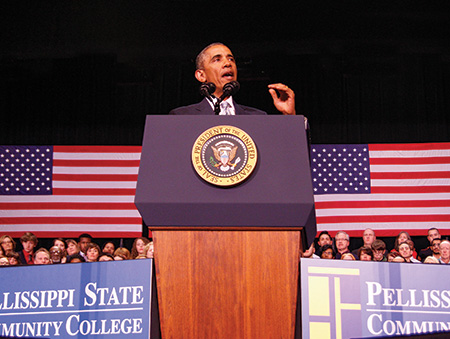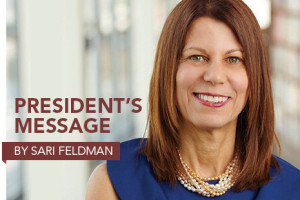
Community colleges are the backbone of US higher education, serving 42% of the nation’s undergraduates. Yet students are struggling to make it through the system. According to the Community College Research Center, some 60% of students entering community college require remedial courses to graduate, and fewer than 25% of them successfully earn a degree within eight years. Part of the problem is that tuition costs (even adjusting for inflation) have risen by 150% since 1985, and the percentage of community college students defaulting on loans is more than 20% (higher than for students in four-year colleges), according to a report in Community College Week, October 13, 2014.
This was the context for President Barack Obama’s proposal, delivered in his State of the Union address on January 20, to make community colleges affordable to everyone. Called “America’s College Promise,” the proposal would allow students to complete a certificate, an associate’s degree, or the first two years of a bachelor’s degree at no cost. States that want to participate must contribute matching funds, invest in higher education and training, and allocate a significant portion of funding based on performance, not enrollment alone.
This proposal will definitely have an impact on the libraries that serve those students. Although the US Congress and state legislatures still need to act to make this happen, community college librarians will need to assess their readiness for a potential surge in enrollment. Library resources, levels of service, budgets, and organizational commitment must be in place to meet this influx.

In the past two decades, community college libraries have responded to many government accountability requirements regarding student access, retention, completion, engagement, and success. While librarians are always resilient in the face of new challenges, these changes are taking place as many of them are watching their budgets and staff numbers shrink.
Proposals for free tuition are not new, and some states have already taken advantage of other opportunities for their students. There are relatively few details about the Obama proposal yet, especially how it would affect each institution, since funding differs from state to state. Given the diversity of colleges and their students, there is no one-size-fits-all answer.
Some gray areas need to be clarified if and when this comes about:
- In some community colleges tuition is already free—either in general or for those meeting specific criteria (academic standing or first-year only)—and would need to be restructured.
- Existing tuition support programs—funded through federal grants, endowments, donation programs, and state legislative initiatives—would require modification.
- Increased enrollments may affect workforce-readiness issues; solutions could include revised teaching strategies for technical courses and curriculum redesign for personalized sessions, such as tutoring, time management, and study skills.
- Federal and state matching funds may not provide sufficient dollars for the necessary infrastructure—not only traditional library services but also mentoring, community service, guided pathways (structured road maps for getting a specific degree), stackable credentials or certifications, expanded orientation, and advisory programs for assisting students in job applications.
- Developing free-tuition program criteria will be difficult and may not result in a dollar-for-dollar match, especially given prior rounds of funding cuts, the diverse nature of state funding structures, and any accountability requirements in place for spending public dollars.
Librarians need to be part of any discussions with the faculty and administration so that they can offer a realistic assessment of how library services and educational outcomes will be affected. At a minimum, they must examine:
- the college administration’s expectations for core library activities and resources that will support increased enrollment, if funding does not result in an increase in the library budget
- ways in which libraries can avoid a shift of library dollars to other areas, if funding is insufficient for the operations of the college
- areas of library service that need to adjust for an influx of general education and workforce students
- data from previous periods of high enrollment that would be useful for projecting organizational changes
- part-time and full-time staffing levels to accommodate more information literacy instruction, orientation, mentoring, and personalized sessions
- assessment and instruction processes that need to be more robust to handle more students
- the integration of information literacy programs into guided pathways and one-on-one mentorship programs
- projected costs for the increased demand for computer use, printing, and other technologies
- the need for campus-wide change discussions
As community college library administrators, we will start and continue these conversations, present alternatives, prepare scenarios, and identify new directions so that we are at the forefront of organizational change and ready for the deluge—if and when it comes.


